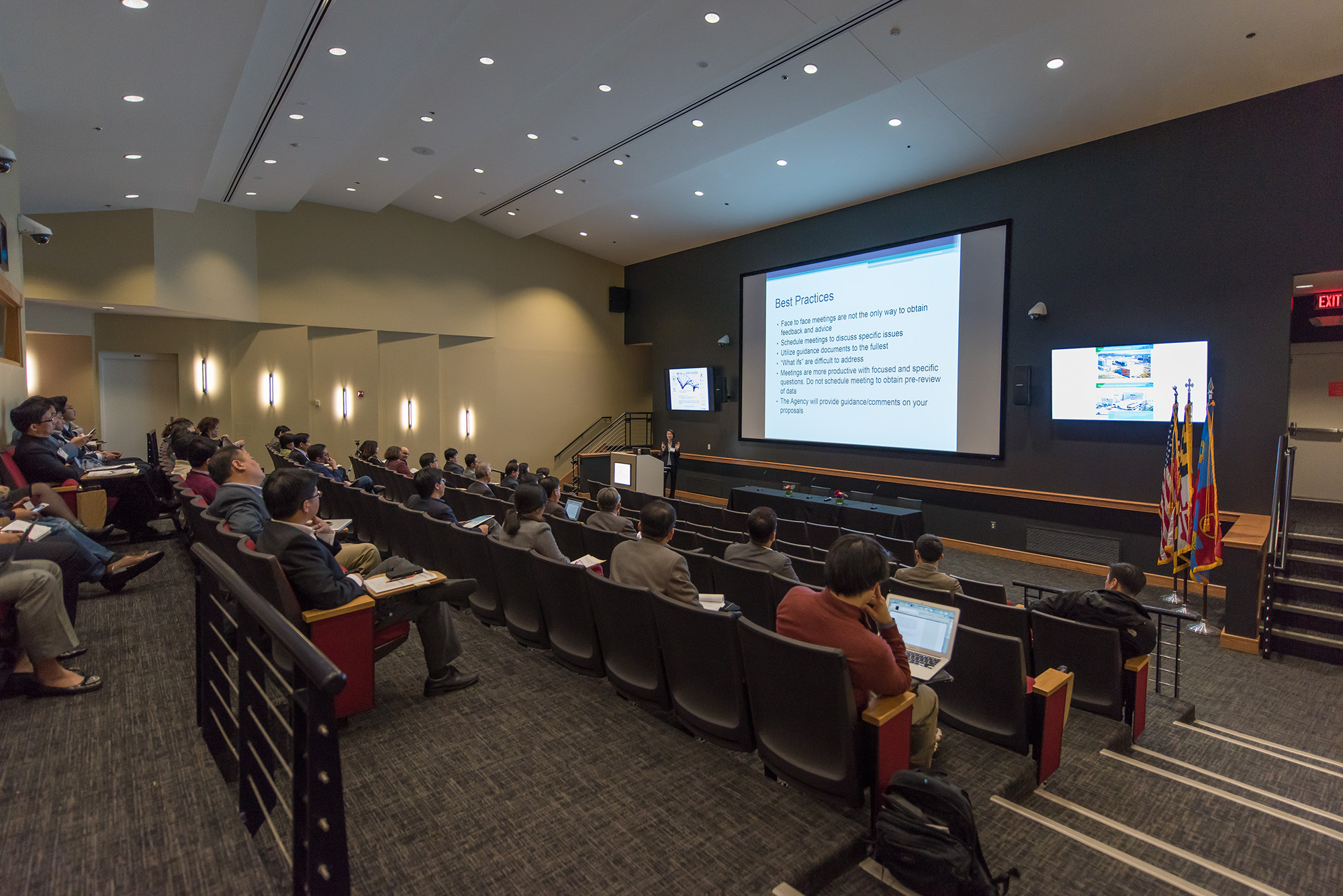Postdoc Candidate Seminar: "Tackling cancer through proteins and peptides: Understanding how changes in the local environment surrounding pHLIP and DIRAS3 affect their respective functionality"
Event Type:
Special Seminar
Contact Person:
Nicole Tenly
Event Info
Date:
Thursday, October 27 2022 - 10:00am to 11:00am
Location:
Auditorium
Event Details
Speaker:
Violetta Burns
Affiliation:
McGovern Medical School, UT Health Houston
Description:
Cancer remains the second leading cause of death in the US despite the advances made in recent years in the early detection and therapeutic fields. One of the causes of these statistical results is the limited specificity of some treatments, such as chemotherapy. The pH Low Insertion Peptide (pHLIP) takes advantage of acidic microenvironments surrounding cancer cells by spontaneously folding and inserting into a lipid membrane under acidic conditions, which makes it an ideal candidate for targeted drug delivery. pHLIP is known to exist in three states: coiled in solution (state I), bound to the membrane (state II), both at pH≥7, and inserted as a transmembrane ɑ-helix (state III) and pH≤ 5.3. While the insertion mechanism of pHLIP has been thoroughly studied, the details of its exit mechanism remain unclear. We hypothesized that the exit of pHLIP was driven by changes in the pH. Our results show that sequential deprotonation of acidic residues destabilizes the peptide within the membrane through loss of helicity, rearrangement of the peptide within the bilayer and through water pore formation, all of which may indicate the initial stages of membrane exit of pHLIP. Another cause is that cancers such as pancreatic, lung and ovarian cancers are predominantly driven by mutations in KRAS, an oncogenic protein known for being difficult to drug. Previous studies have shown that DIRAS3 inhibits KRAS likely by co-clustering with KRAS on the plasma membrane. DIRAS3 protein is a member of the RAS superfamily, and possesses 60% amino acid homology to KRAS, but with the distinction of a characteristic N-Terminus Extension (NTE). NTE is believed to be tethered to the membrane through a myristoyl tail, which allows DIRAS3 to be bound to membrane via both N- and C-terminus. We hypothesize that the NTE acts as a lipid anchor by embedding itself into the plasma membrane. Our results show that the NTE helicity content is dependent on the presence of POPS lipids in the bound leaflet and that interactions between POPS and NTE basic amino acids are crucial for membrane binding. These results suggest that NTE may act as a secondary lipid anchor for DIRAS3’s membrane engagement.
Join Zoom Meeting
https://umd.zoom.us/j/95406362383?pwd=UU4xVWVQMW9Lc3JxUFlRRTdxc0toUT09
Meeting ID: 954 0636 2383
Passcode: 723670
One tap mobile
+13017158592,,95406362383# US (Washington DC)
+13126266799,,95406362383# US (Chicago)
Dial by your location
+1 301 715 8592 US (Washington DC)
+1 312 626 6799 US (Chicago)
+1 646 931 3860 US
+1 929 436 2866 US (New York)
+1 309 205 3325 US
+1 346 248 7799 US (Houston)
+1 360 209 5623 US
+1 386 347 5053 US
+1 564 217 2000 US
+1 669 444 9171 US
+1 669 900 6833 US (San Jose)
+1 719 359 4580 US
+1 253 215 8782 US (Tacoma)
Meeting ID: 954 0636 2383
Find your local number: https://umd.zoom.us/u/acKBU2zGVr
Join by SIP
95406362383@zoomcrc.com
Join by H.323
162.255.37.11 (US West)
162.255.36.11 (US East)
115.114.131.7 (India Mumbai)
115.114.115.7 (India Hyderabad)
213.19.144.110 (Amsterdam Netherlands)
213.244.140.110 (Germany)
103.122.166.55 (Australia Sydney)
103.122.167.55 (Australia Melbourne)
149.137.40.110 (Singapore)
64.211.144.160 (Brazil)
149.137.68.253 (Mexico)
69.174.57.160 (Canada Toronto)
65.39.152.160 (Canada Vancouver)
207.226.132.110 (Japan Tokyo)
149.137.24.110 (Japan Osaka)
Meeting ID: 954 0636 2383
Passcode: 723670
